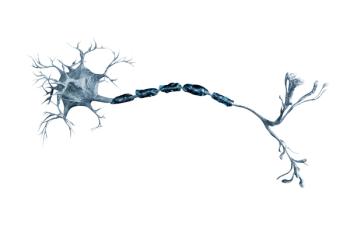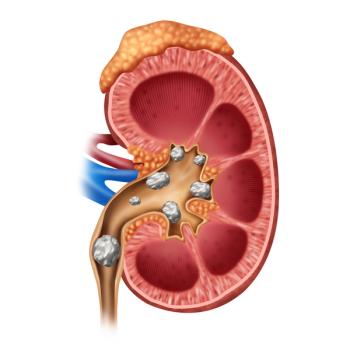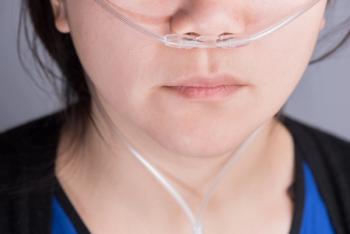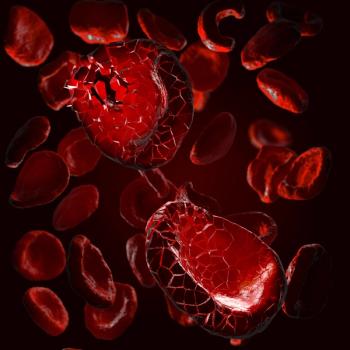
Clinical
Latest News

Latest Videos

CME Content
More News

After Medicare Part D plans stopped covering a chronic obstructive pulmonary disease (COPD) therapy, patients had gaps in care and increased out-of-pocket costs, according to a recent study.

Field loss may not be the only visual deficit resulting from macular damage while resulting functional losses may impair facial recognition, according to new research published in JAMA Ophthalmology.

According to the researchers, the findings are paving the way toward precision medicine and may have broader use in tracking treatment response in adult-onset motor neuropathy in the future.

Multiple myeloma is not easily diagnosed, and its early symptoms may be confused for another condition.

Five biologics used in the treatment of adult patients with plaque psoriasis have been found to improve health-related quality of life.

Researchers analyzed 2 cohorts of patients with chronic obstructive pulmonary disease (COPD) to characterize who is most at risk for developing hypercapnia and who could most benefit from at-home noninvasive inhalation therapy.

The case illustrates how these 2 different conditions may share a related mechanism of action.

More real-world evidence is needed to determine what role a score of 100 on the Psoriasis Area and Severity Index (PASI) might have in daily clinical practice, according to a recent review.

Whole-genome sequencing (WGS) is at least as accurate as conventional tests when it comes to genomic profiling in patients with acute myeloid leukemia and myelodysplastic syndromes.

Fracture prediction tools for East Asian individuals vary by country. In the United States, the US-Asian Fracture Risk Assessment Tool provides hip fracture probabilities that correspond to observed estimates.

More than a year into the COVID-19 pandemic, a new study suggests that individuals recovering from acute kidney injury stemming from COVID-19 will require kidney monitoring after they leave the hospital.

Idecabtagene vicleucel induced progression-free survival up to 20 months and a complete response in one-third of patients with multiple myeloma who had relapsed multiple times and had received at least 3 previous lines of treatment.

A review of evidence finds that oxygen therapy may be beneficial for all patients with pulmonary arterial hypertension, not just those who develop severe hypoxemia.

Posttraumatic headache (PTH) with a migraine phenotype is associated with persistent symptoms following concussion, compared with nonmigraine PTH or no PTH, according to study results published in JAMA Network Open.

Female patients and those under age 50 have a greater risk of severe asthma exacerbations and a lower health-related quality of life, despite having better lung function compared with male and older patients.

Patients with pulmonary arterial hypertension (PAH) who are treated with selexipag within 6 months of their diagnosis had a reduced risk of morbidity/mortality compared with patients who were treated longer than 6 months after diagnosis.

A recent study tries to discern if treatment for chronic lymphocytic leukemia (CLL) or CLL-like disease accelerates the risk of myeloid neoplasms.

Researchers describe the case of an older patient who underwent myeloma drug sensitivity testing as part of an effort to identify the therapies most likely to produce a response in this difficult-to-treat population.

According to new research, 88% of trials initially matched to patients were eventually classified as false positives when manually screened by a provider.

A retrospective study looking at pediatric patients hospitalized in 4 New York hospitals in 2020 with COVID-19 or multisystem inflammatory syndrome in children (MIS-C) found that acute kidney injury (AKI) occurred in 11.8% of patients.

The FDA approved axicabtagene ciloleucel (Yescarta) for the treatment of adult patients with relapsed or refractory follicular lymphoma following 2 or more lines of systemic therapy.

Despite the level of disease severity of atopic dermatitis, children with the condition usually have at least 1 other inflammatory or atopic comorbidity, according to new study results.

A study finds rates of pediatric COVID-19 cases in Mississippi were largely underestimated; countries with more overweight citizens report more COVID-19 deaths; Senate acts to pass $1.9 trillion relief package.

Targeting pulmonary arterial capacitance or compliance can improve overall survival and quality of life in patients with pulmonary arterial hypertension (PAH) and pulmonary hypertension secondary to left heart disease (PH-LHD).

Findings suggest that including slowly repeated evoked pain (SREP) in quantitative sensory testing protocols may enhance assessments of altered pain modulation in different pain conditions.










































